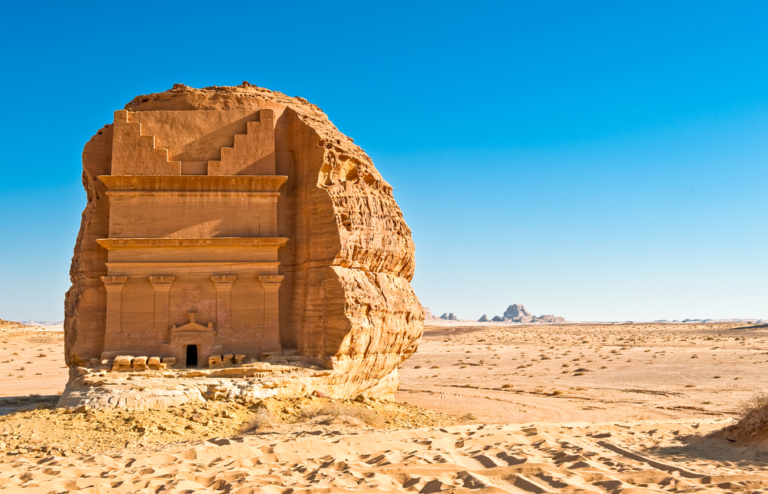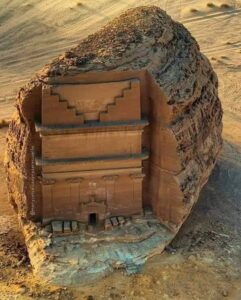A Historical Crossroads of Civilizations: Mada’in Saleh, Saudi Arabia’s Petra


Petra, situated in Saudi Arabia, specifically Mada’in Saleh, stands as a captivating testament to the confluence of diverse civilizations throughout history. Serving as a crucial meeting point, this city played a pivotal role as a bustling commercial route connecting the Arabian Peninsula to the Mediterranean. The architectural marvels of Petra reflect a rich tapestry of influences, drawing from Egyptian, Phoenician, and Hellenistic traditions.
The city’s structures bear witness to the interweaving of these distinct cultural elements, creating a unique blend that is both aesthetically striking and historically significant. The intricate designs and monumental structures tell a story of a bygone era when Petra thrived as a hub for trade, cultural exchange, and human interaction.
Notably, the influence of Egyptian architectural motifs, Phoenician craftsmanship, and Hellenistic design principles can be discerned in the intricate carvings, grand facades, and well-planned urban layout of Petra. The city’s strategic location along the trade routes contributed to its cosmopolitan character, attracting people from various backgrounds and fostering a vibrant cross-cultural exchange.

Mada’in Saleh, situated in the northwest of Saudi Arabia, serves as a particular focal point for the Nabataeans, the ancient inhabitants of this region. Their presence in this city adds an additional layer of historical significance, providing insights into the socio-economic and cultural dynamics that shaped Petra over the centuries.
In essence, Petra of Saudi Arabia, with its Mada’in Saleh component, emerges as more than just a physical location; it is a living testament to the interconnectedness of civilizations, a silent witness to the ebb and flow of history, and a symbol of the enduring human spirit that has left an indelible mark on this ancient crossroads.